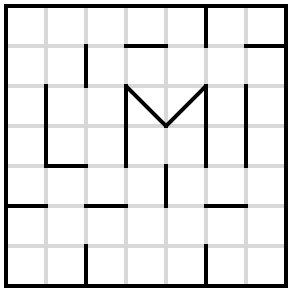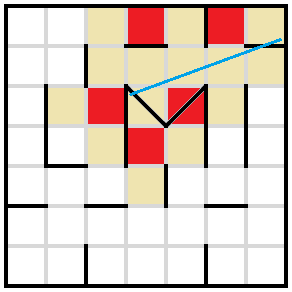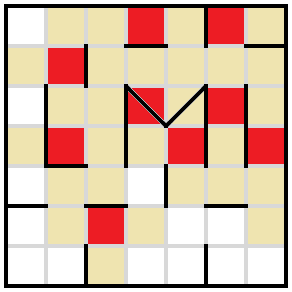This is a Heyacrazy puzzle, originally constructed for a test for Logic Masters India.
Rules of Heyacrazy:
Shade some cells of the grid.
Shaded cells cannot be orthogonally adjacent; unshaded cells must be orthogonally connected.
When the puzzle is solved, you must not be able to draw a line segment that passes through two borders, and does not pass through any shaded cells or grid vertices.
For an example puzzle and its solution, see this question.




















